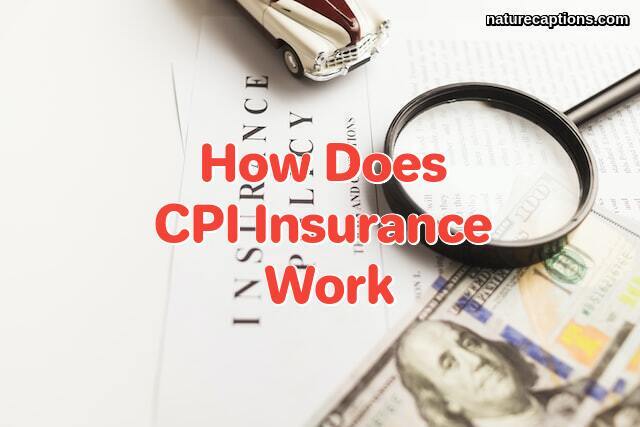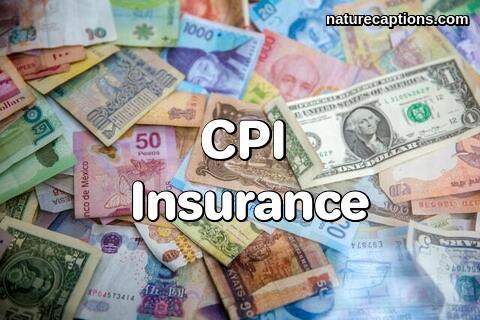CPI insurance, or collateral protection insurance, is a type of insurance policy that is often required by lenders as a condition of a loan agreement. The purpose of CPI insurance is to protect the lender’s collateral (usually a vehicle) in case the borrower is unable to make the loan payments. In this article, we’ll take a closer look at how CPI insurance works, what it covers, and how to determine if you need it.
How Does CPI Insurance Work?
When a borrower takes out a loan to purchase a vehicle, the lender will typically require that the borrower maintain a certain level of insurance coverage on the vehicle. This insurance is designed to protect the lender’s collateral in case the vehicle is damaged, destroyed, or stolen.
However, if the borrower fails to maintain the required insurance coverage or if their insurance policy lapses for any reason, the lender may purchase CPI insurance on the borrower’s behalf. CPI insurance is typically more expensive than traditional insurance policies, and the cost is added to the borrower’s loan balance.

If the borrower defaults on the loan, the lender may use the CPI insurance to recoup the remaining balance of the loan. For example, if the borrower owes $10,000 on the loan and the vehicle is repossessed and sold for $8,000, the CPI insurance may cover the remaining $2,000 balance.
What Does CPI Insurance Cover?
CPI insurance is designed to protect the lender’s collateral in case the borrower is unable to make the loan payments. As such, CPI insurance typically covers the same types of events that traditional auto insurance policies cover, such as:
- Theft – CPI insurance will typically cover the loss of the vehicle if it is stolen and not recovered.
- Collision – CPI insurance will typically cover the cost of repairing or replacing the vehicle if it is damaged in a collision.
- Other types of damage – CPI insurance may also cover other types of damage to the vehicle, such as damage from fire, flood, or vandalism.
It’s important to note that CPI insurance is not designed to protect the borrower’s personal property in the vehicle. If the borrower wants to protect their personal property in the vehicle, they will need to purchase a separate insurance policy.
How Much Does CPI Insurance Cost?
The cost of CPI insurance can vary depending on a number of factors, including the value of the vehicle, the borrower’s credit history, and the amount of coverage required by the lender. CPI insurance is typically more expensive than traditional insurance policies, and the cost is added to the borrower’s loan balance.
Some lenders may require a minimum level of coverage, while others may allow the borrower to choose their own coverage limits. It’s important for borrowers to understand the cost of CPI insurance and to factor it into their overall loan costs when considering a loan.
Do I Need CPI Insurance?
Whether or not you need CPI insurance will depend on the requirements of your lender. If you are taking out a loan to purchase a vehicle, your lender may require you to maintain a certain level of insurance coverage on the vehicle. If you fail to maintain the required coverage, your lender may purchase CPI insurance on your behalf.

If you are unsure whether or not you need CPI insurance, it’s important to check with your lender. Your lender will be able to provide you with information about the insurance requirements for your loan and whether or not CPI insurance is necessary.
It’s also important to note that CPI insurance is not a substitute for traditional auto insurance. If you own a vehicle and drive it on public roads, you will need to maintain a certain level of insurance coverage to comply with state laws.
Conclusion
CPI insurance is a type of insurance policy that is required by lenders as a condition of a loan agreement to protect the lender’s collateral in case the borrower defaults on the loan. CPI insurance typically covers events such as theft, collision, and other types of damage to the vehicle, and the cost of the insurance is added to the borrower’s loan balance.
It’s important for borrowers to understand the cost of CPI insurance and to factor it into their overall loan costs when considering a loan. Whether or not CPI insurance is required will depend on the requirements of the lender, so it’s important to check with the lender to determine if CPI insurance is necessary.
While CPI insurance is designed to protect the lender’s collateral, it’s important for borrowers to remember that it is not a substitute for traditional auto insurance. If you own a vehicle and drive it on public roads, you will need to maintain a certain level of insurance coverage to comply with state laws.
Overall, CPI insurance can provide important protection for lenders and borrowers alike, but it’s important for borrowers to understand the terms of their loan agreement and insurance requirements to make informed decisions about their financial obligations.